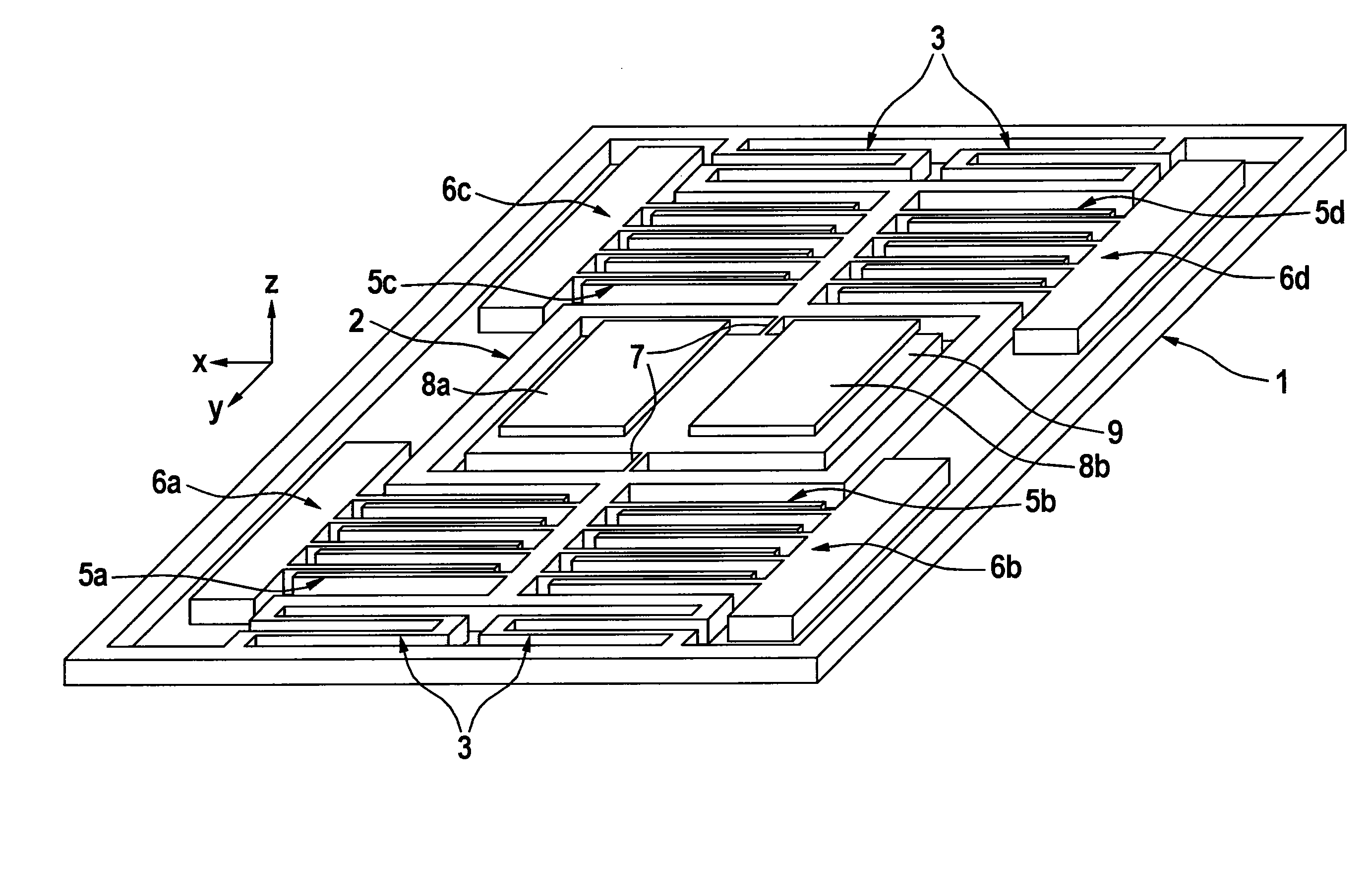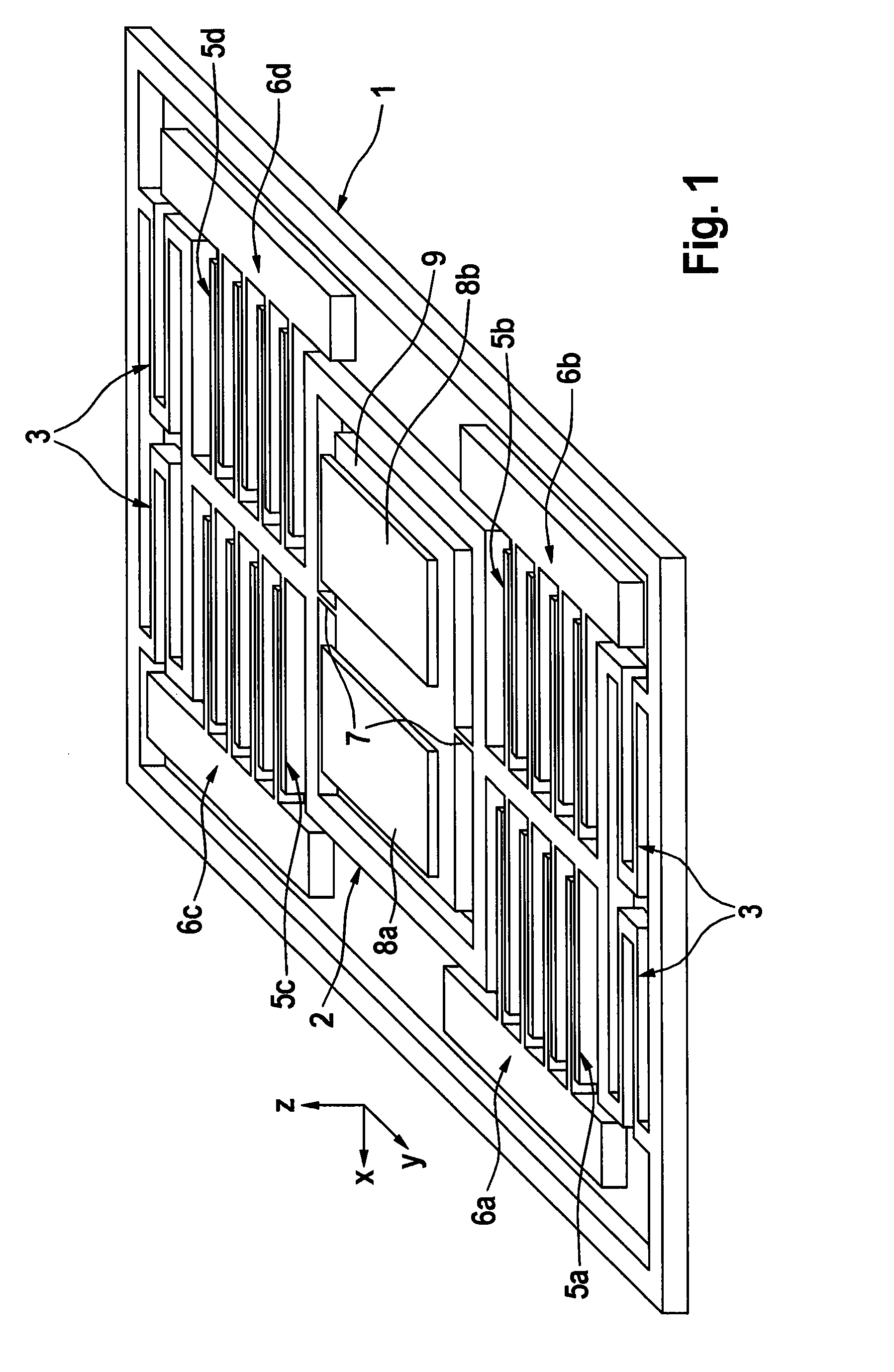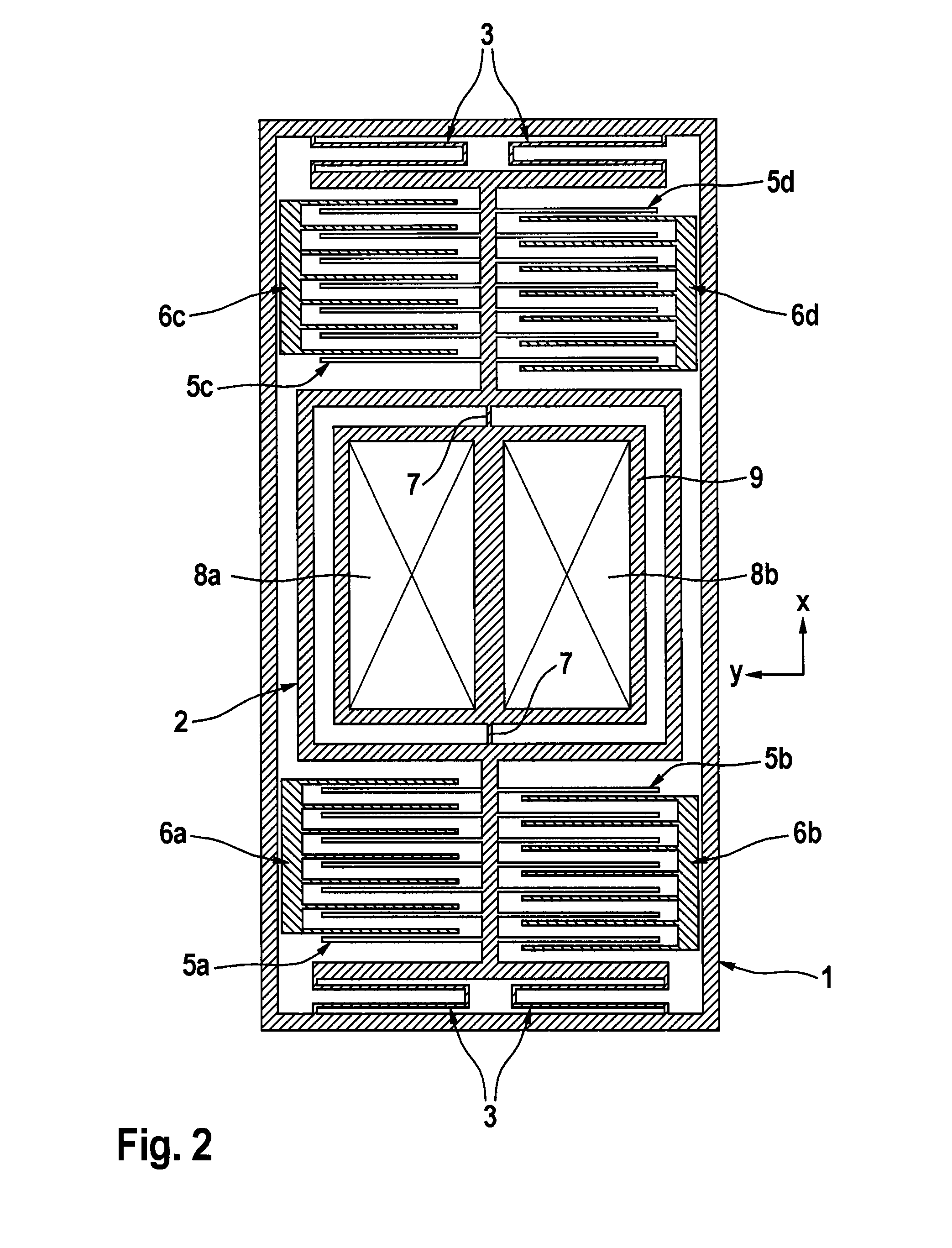Micromechanical acceleration sensor
a technology of acceleration sensor and micro-mechanical body, which is applied in the direction of acceleration measurement in multiple dimensions, acceleration measurement using interia force, instruments, etc., can solve the problem of not being well suited to detecting accelerations which are relatively large in absolute value, and achieve cost-effective effects
- Summary
- Abstract
- Description
- Claims
- Application Information
AI Technical Summary
Benefits of technology
Problems solved by technology
Method used
Image
Examples
Embodiment Construction
[0047]An exemplary embodiment of an acceleration sensor is illustrated in a spatial illustration in FIG. 1, and in plan view in FIG. 2. This acceleration sensor comprises a substrate which is embodied as a frame 1. The substrate frame 1 is oriented here, as depicted, with respect to the Cartesian x-y-z coordinate system. Furthermore, the substrate or frame 1 is firmly and rigidly directly or indirectly connected to, for example, the inertial system on which the accelerations which are to be detected primarily act. In the substrate frame 1a first deflectable frame 2 is suspended thereon by means of spring elements 3. The spring elements 3 permit a movement of the frame 2 or of the first deflectable frame in the direction of a measuring direction parallel to the y axis, but they are rigidly embodied in the spatial directions x and z. The measuring direction parallel to the y axis corresponds to the direction for the detection of relatively large accelerations (high-G). Parallel the x ...
PUM
| Property | Measurement | Unit |
|---|---|---|
| Mass | aaaaa | aaaaa |
| Gravity | aaaaa | aaaaa |
| Sensitivity | aaaaa | aaaaa |
Abstract
Description
Claims
Application Information
 Login to View More
Login to View More - R&D
- Intellectual Property
- Life Sciences
- Materials
- Tech Scout
- Unparalleled Data Quality
- Higher Quality Content
- 60% Fewer Hallucinations
Browse by: Latest US Patents, China's latest patents, Technical Efficacy Thesaurus, Application Domain, Technology Topic, Popular Technical Reports.
© 2025 PatSnap. All rights reserved.Legal|Privacy policy|Modern Slavery Act Transparency Statement|Sitemap|About US| Contact US: help@patsnap.com



